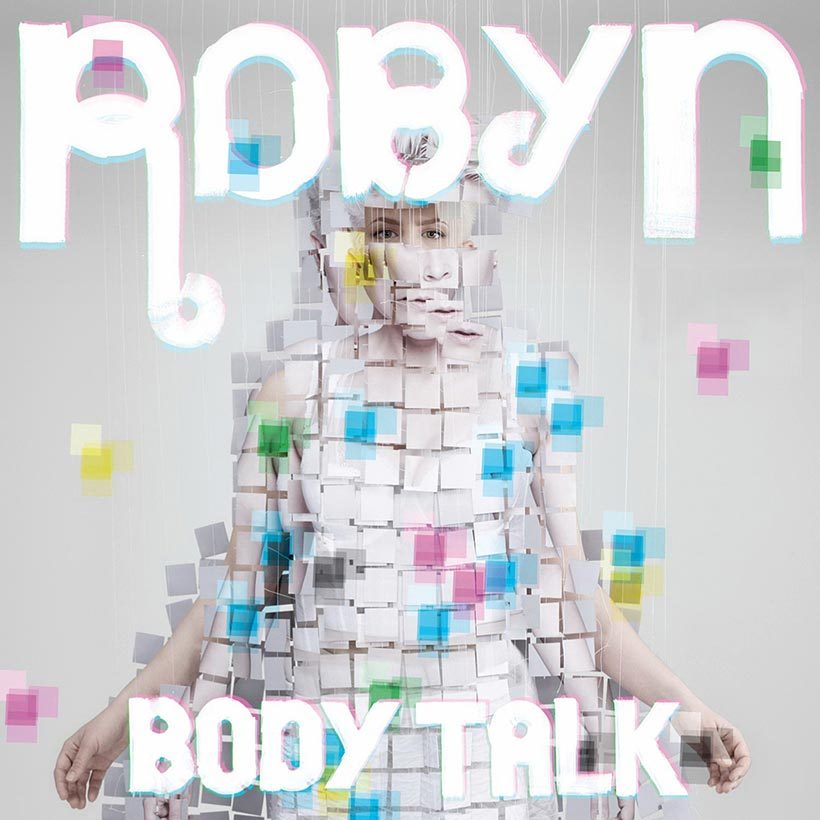‘Body Talk’: How Robyn Got The Whole World Dancing With Her
Assembled from a year’s worth of separate projects, ‘Body Talk’ found Robyn hitting remarkable highs throughout a stunningly creative period.

By 2010, the industry’s conventions about how to release new music were being routinely challenged. Robyn had already proved she could do things her own way when, in 2005, she issued her self-titled fourth album on her own label. That record had included the UK chart-topper “With Every Heartbeat” and had truly established her global reputation as an innovator who also understood the importance of a powerful pop hook. Five years later, she was no less determined to do things her own way with Robyn’s follow-up, Body Talk.
Listen to Body Talk on Apple Music and Spotify.
Robyn’s independent streak was illustrated by her desire to release tracks from the Body Talk project in distinct segments. Mindful that she had been largely off the scene for some time, she decided to issue tracks as they were completed, rather than hold them back until they could be assembled into a more conventional package.
Launching the series with a single as strong as “Dancing On My Own” made certain the maverick campaign got off to a sound start. The electro ballad emerged from sessions that began in summer 2009 under the stewardship of Klas Ahlund, who was named executive producer on the project. It has become the song Robyn is arguably most famous for, was her first No.1 single in her homeland of Sweden, and has since been covered by many other artists.
The quirky “Fembot” had already been chosen as Body Talk’s first promotional track and was swiftly followed by “Dancehall Queen,” an electro-reggae jam allegedly inspired by Swedish group Ace Of Base, who dominated international charts in the early 90s, and was created with superstar producer Diplo. Eight tracks were assembled for Body Talk Pt.1, which was officially released on June 11, 2010. Across just 30 minutes of playing time, the more conventional electro-pop ends here with a fragile Swedish folk ballad, “Jag Vet En Dejlig Rosa.” It didn’t make the final Body Talk collection, but if you want to imagine how ABBA’s more left-field experimentation might sound in the 21st Century, this is a pretty good steer. Pt.1 opener “Don’t F__king Tell Me What To Do” did make the later cut and its dry, chilling monologue is a wry dig at our contemporary, self-obsessed culture.
By September 6 of that year, it was time for the second batch of fresh tracks to be hatched from the studio, with “Hang With Me” (which had been included on Pt.1) reworked to emulate the dancefloor drama of Robyn’s previous successes. It’s one of Robyn’s most effective records, with a catchy earworm chorus that did decent business in Sweden. Snoop Dogg joined her on “U Should Know Better” – another highlight from Body Talk Pt.2 – while “In My Eyes” is a pounding slab of 80s-influenced synth-rock. Close your eyes and you can imagine this sitting on the Flashdance soundtrack.
November 22, 2010, saw the project reassembled again, compiling stand-out moments from the previous two releases and polishing them off with five new songs. Royskopp’s contribution to Body Talk Pt.1 – “None Of Dem” – made the new and singularly titled Body Talk set alongside Snoop Dogg’s song, though the most surprising collaboration was a reunion with Max Martin on “Time Machine.” Max had worked with Robyn on her late 90s breakthrough and this new, glam-pop-inspired throbber maintained his strike-rate for scoring a commercial bullseye.
Distanced from the commercial coal-face of complex marketing messages, Body Talk now stands as a cracking souvenir from a burst of creativity that saw Robyn craft some of the greatest songs of her career. “Dancing On My Own” may be the first track that people will be drawn to, but the album boasts 14 other solid contenders.
When critics look to compile the countdown of the decade’s greatest electro-pop records, Body Talk may still cause confusion. Is it a standalone project or is it actually a “greatest hits” collection from a single year of releases? That’s for them to decide, but there’s one thing everyone will agree on: not many artists ever enjoy a year like that.












